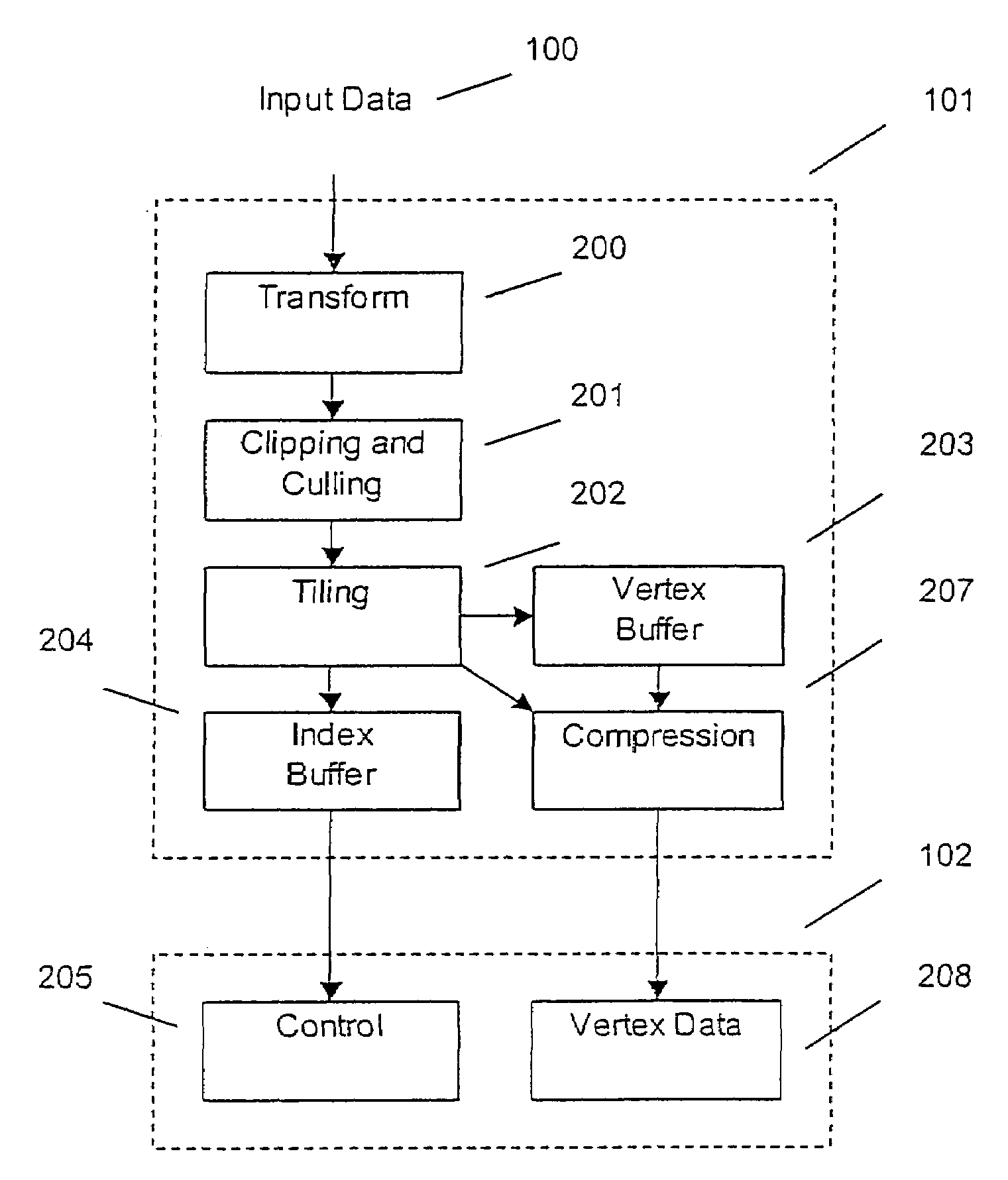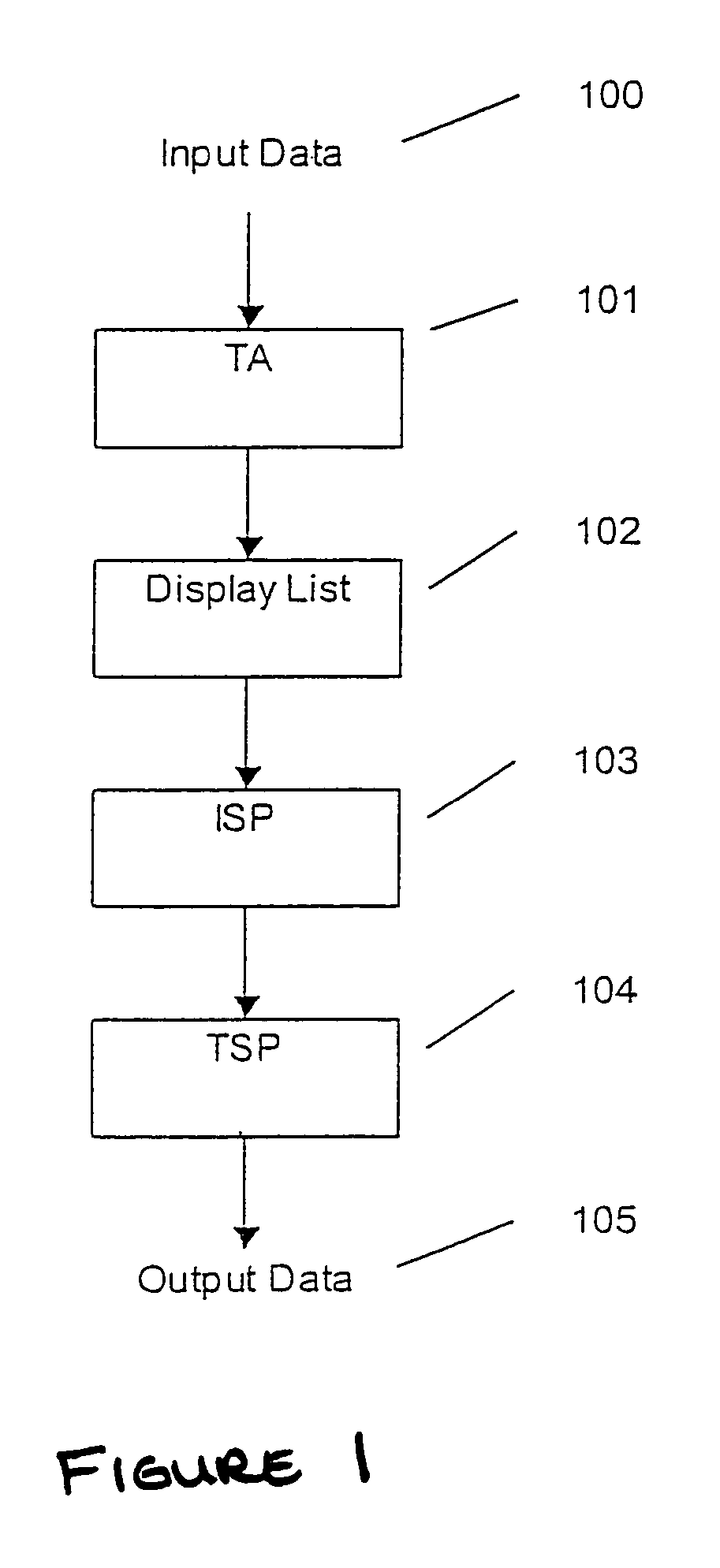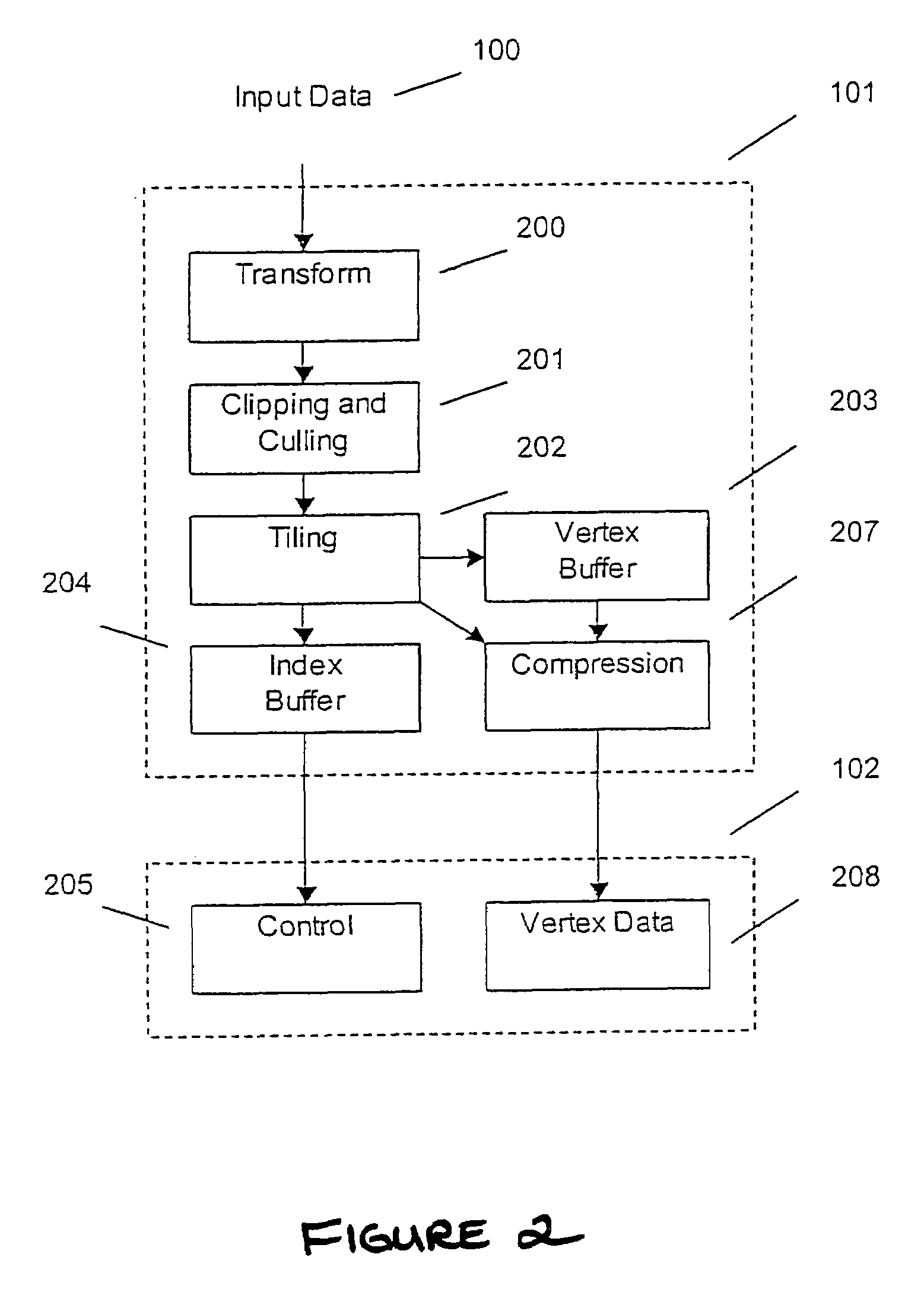Display list compression for a tiled 3-D rendering system
a tiled 3-d rendering and display list technology, applied in the field of 3dimensional computer graphics rendering system, can solve the problems of increasing display list storage and bandwidth requirements, increasing the complexity of scenes to be rendered, etc., and achieve the effect of reducing the size and memory bandwidth required and reducing the cos
- Summary
- Abstract
- Description
- Claims
- Application Information
AI Technical Summary
Benefits of technology
Problems solved by technology
Method used
Image
Examples
Embodiment Construction
[0024]FIG. 2 illustrates the processing stages and data flow of a tile accelerator with vertex data compression in an embodiment of the invention.
[0025]Input data 100 contains a description of scene to be rendered. This includes the vertices that define the scene, a description or how vertices should be assembled into primitive objects such as lines and triangles, and state information describing the manner in which they should be rendered. The state information includes information about how to rasterise, texture and shade the primitive objects. In the embodiment, the state information includes the state specified by OpenGL and Direct X both of which are industry standard application programming interfaces
[0026]The Tile Accelerator 101 reads and processes vertices according to a list of rendering commands in the input data.
[0027]FIG. 3 shows a possible configuration of the input data. The rendering commands 300 indicate that two triangles are to be drawn and the state information d...
PUM
 Login to View More
Login to View More Abstract
Description
Claims
Application Information
 Login to View More
Login to View More - R&D
- Intellectual Property
- Life Sciences
- Materials
- Tech Scout
- Unparalleled Data Quality
- Higher Quality Content
- 60% Fewer Hallucinations
Browse by: Latest US Patents, China's latest patents, Technical Efficacy Thesaurus, Application Domain, Technology Topic, Popular Technical Reports.
© 2025 PatSnap. All rights reserved.Legal|Privacy policy|Modern Slavery Act Transparency Statement|Sitemap|About US| Contact US: help@patsnap.com



